Everyone knows that muscle contraction is the driving force of exercise, that is, different muscles contract and work together at different time intervals to complete a running action. So how do different muscles work in the process? What will change the way they work in different running postures and speeds? Today, we will use the famous science and technology in sports science, “Surface Electromyography†technology, to find out.
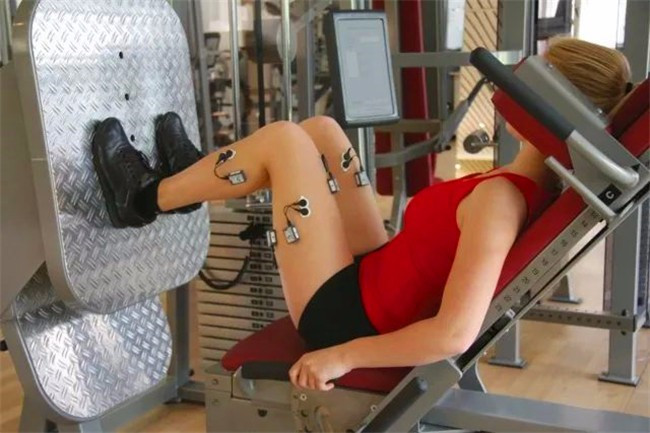
Let's briefly explain to everyone what “myoelectricity†means: The brain's nerves command muscle contraction by sending signals to muscles, and this signal is in the form of bioelectricity. Surface electromyography can achieve this "signal" through a signal receiver attached to the body surface. Based on this, we can analyze when the different muscles contract during exercise, how strong the contraction is, and so on.
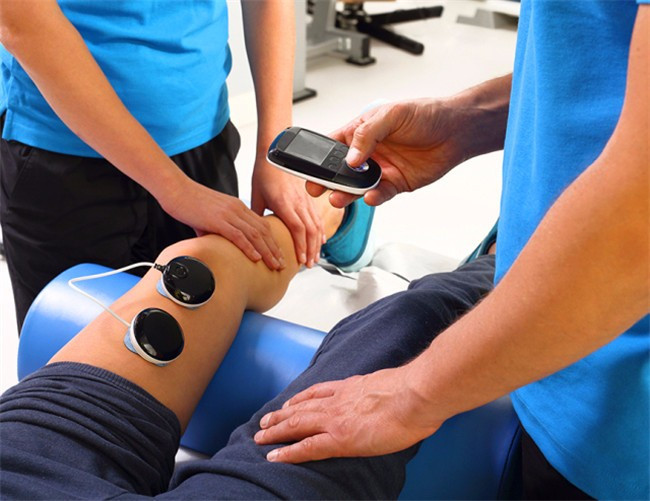
In this experiment, we included the marathon runners in the medial and lateral gastrocnemius posterior to the calf, the sacral musculoskeletal short lateral muscle, the anterior tibialis anterior to the calf, the rectus femoris superior to the thigh, and the medial and lateral femoral biceps femoris. A total of seven positions were affixed with sensors, and the middle and long distance runners were allowed to set the pace at 4:00 and 6:00 respectively. They used two different landing modes, heel landing and forefoot landing, wearing shoes and barefoot. , run through the force table and record the EMG data.
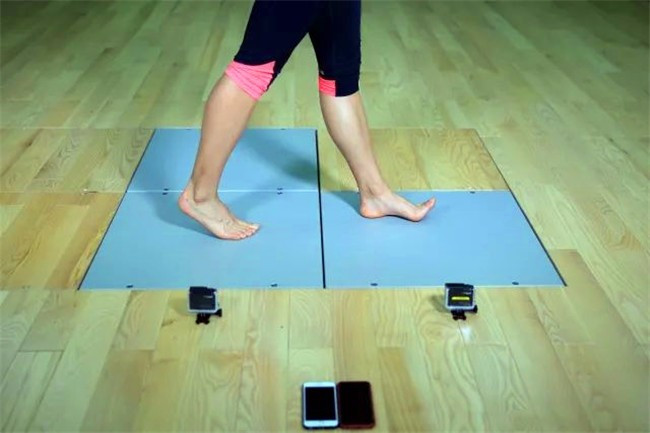
The EMG data is long, so of course - everyone sees the waveforms that we have already processed. Based on this, we can generate a report with specific values. After we have recorded and analyzed the report, we can draw the experimental conclusion.
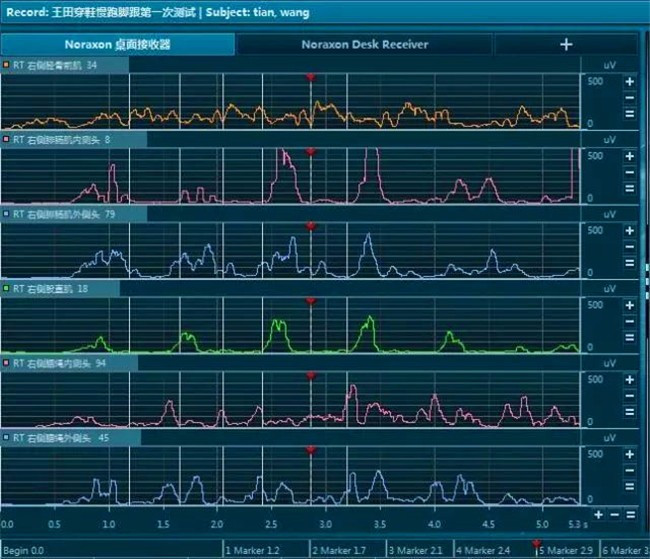
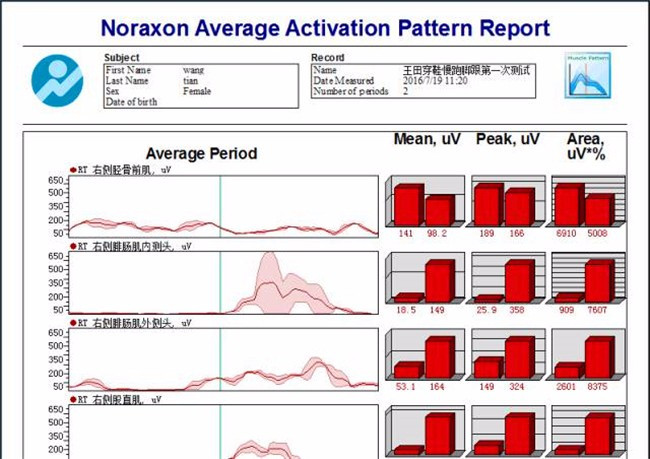
In this experiment, the data we selected was from the instant of landing to the moment of leaving the ground, and it was also the part that we usually care about most. With regard to more professional stuff, we will not go into details. When we look at the following analysis, we can simply understand that the higher the value, the higher the degree of muscle activation and the greater the work done.
First, the front leg muscles
The front calf muscle is called the tibialis anterior muscle. You can try to check the tip of your toe. You can touch this muscle in front of the calf, so its main function is to hook the tiptoe. During the running, this muscle mainly helps us to hook the tip of the toes. Do not allow the tiptoes to hang down and scratch the ground. So you can see that in the chart, this muscle activates more in the heel landing game.
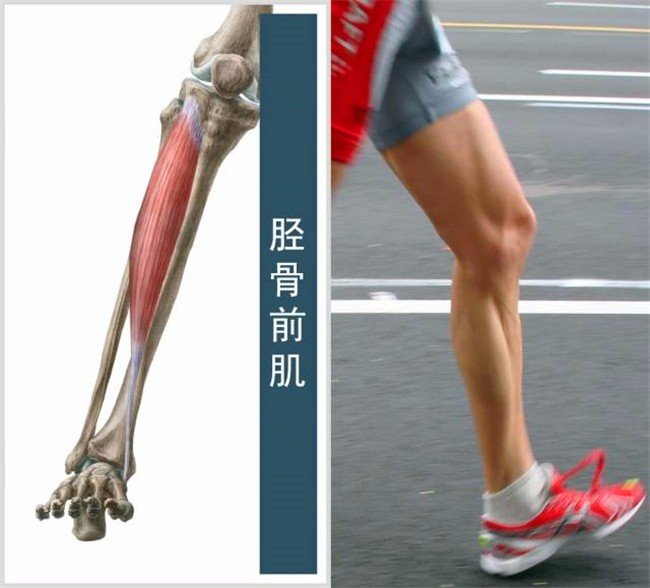
Some runners may have questions, then I run in the foot of the law, the toes have always been sagging, ah, how does this piece of muscle force it? Because this muscle cooperates with several other muscles to help stabilize and protect the ankle joint, the ankle joint is involved in more cushioning in the way the foot is in front of the palm, so it is also activated, but not as much as the heel. High time.
An attentive runner may be able to find that at the same speed, why does this muscle activate more when running with barefoot than when running barefoot? Because most of the running shoes now have a heel position slightly higher than the forefoot, they need to be hooked on the tip of the toe to ensure normal tribal position. Most people prefer to use the foot to the ground when they are barefoot, so they run barefoot. When the toe hook is not so powerful.
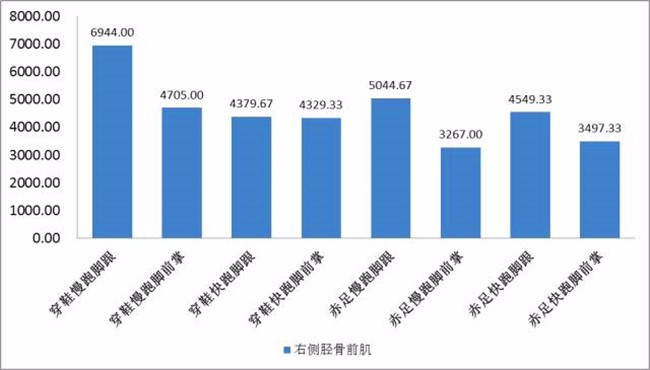
Second, the lower leg muscles
Speaking of the back muscles of the calf, we may all be familiar with each other. What are the three heads of the triceps brachii often known? The diaphragm muscles and soleus muscles are respectively. This time we are testing two large muscles on the surface, collectively known as the gastrocnemius muscle.
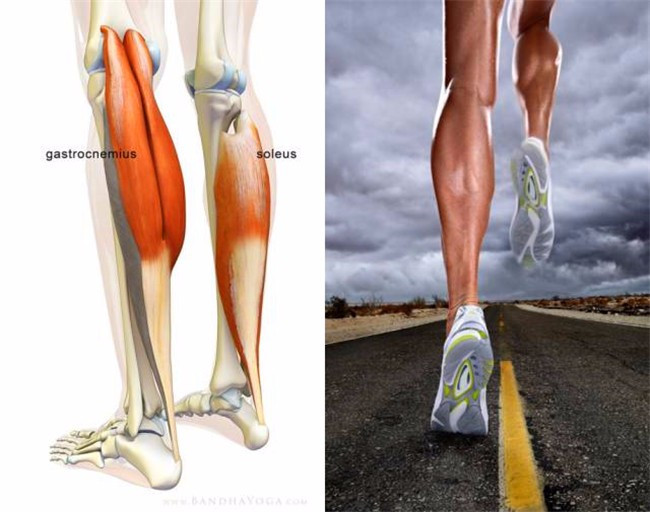
Let's look at the medial head of the gastrocnemius. Obviously, running faster is a lot more than jogging. This is because when the running speed is fast, the heel landing requires more forceful slamming to gain greater speed; and when the forefoot lands, it needs this muscle to participate in the process of landing buffering and centrifugation, that is, with us. Doing a slow-moving, slow-moving move, like lifting a muscle, requires the muscles to contract in the stretched state. Muscle's centrifugal contraction is generally stronger and muscles are more active.
At the same speed, we can find that when the forefoot lands, the activation of this muscle is basically higher than when the heel strikes. We can understand in this way that if the same squat strength can achieve the same speed, then the muscles that do more work when landing in the forefoot of the foot are the more work done when the floor cushions. This is why Xiao Bian has repeatedly reminded everyone that if the calf muscle capacity is insufficient, carefully try the reasons for running the forefoot.
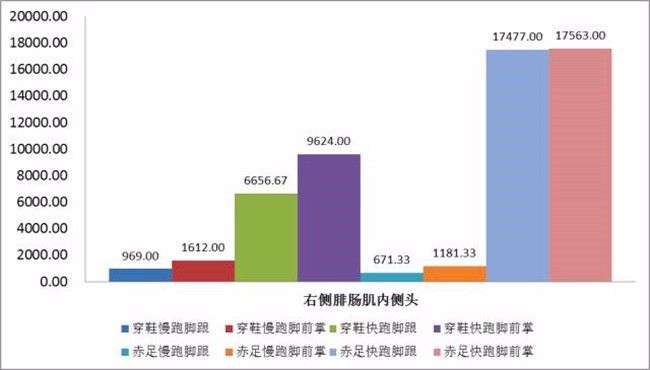
Looking at the outside of the head again, it is very obvious that when the shoes are worn, this muscle activates much more than when barefoot, and when the heel strikes the ground, it is basically higher than when the forefoot lands. This is because when we are running on the ground, we usually get used to the outside of the foot. When we leave, it is usually a big toe. If we take the example of the right foot, we take an arc like the upper left. So our feet did a little valgus action, and the lateral head of the gastrocnemius could do this. In other words, the more full the action in the depression, the more obvious the activation of this muscle. The heel is clearly more full-bodied than the top of the foot; wearing shoes is more obvious than barefoot.
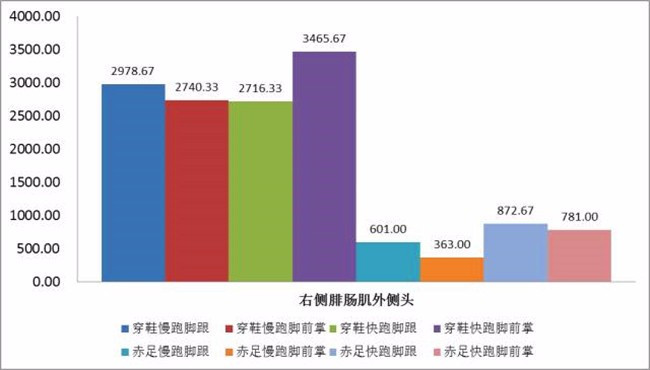
Third, the lateral leg muscles
The muscles on the outside of the calf are called the sacrum muscles. Its main function is to elevate the feet, and it also has the ability to lift the jaws. Of course, its main function in peacetime is to help maintain the stability of the ankle and prevent lameness.
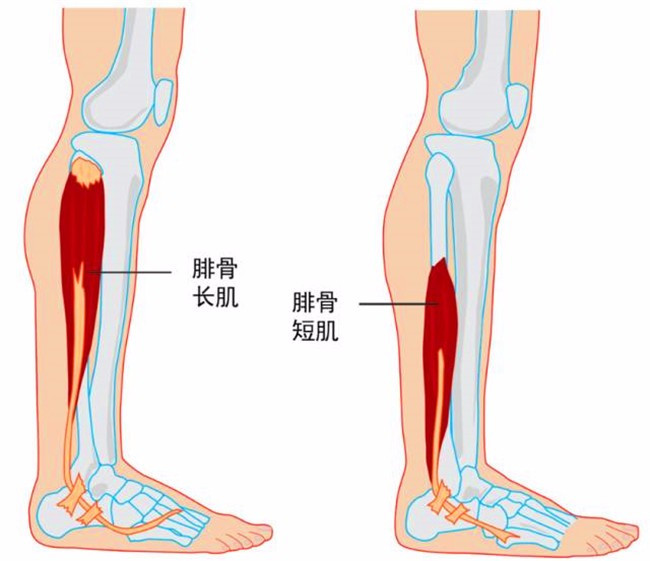
In the chart we can clearly see that this muscle is very active when wearing shoes.
One of the reasons for this is that, when wearing shoes, the lateral landing is more pronounced than when barefoot, so our feet need more force when they turn to the inside and leave the ground with their big toe or second toe. The second reason is that when we wear shoes, the stability of our ankles is worse than barefoot. why? A simple explanation is that you've seen people who stomp when they walk in shoes and have seen someone stomp on their bare feet? In fact, this is because the structure of the running shoes determines that the heel part will be higher than the toe part, and the structure of our feet determines that we can easily stomp our feet, and the higher the easier it is to crouch. It's a devil, but it's full of temptation but it's dangerous. Well, Xiaobian is off topic.
Then why is the heel to the ground higher than the top of the foot? The action of lifting the heel to lift the ground will be more obvious, and the force required for valgus will be greater.
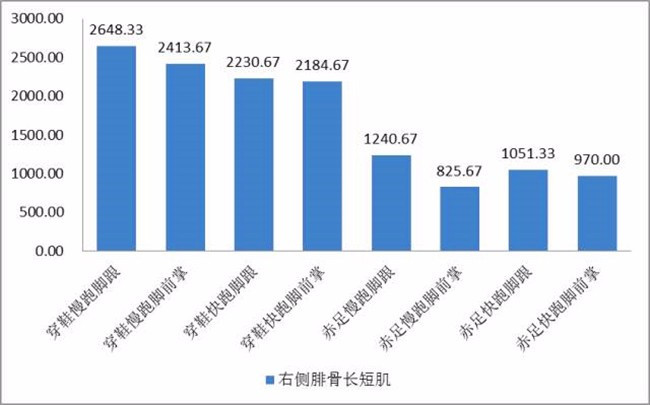
Fourth, the thigh muscles
The muscles that we often say on the back of the thigh, like the muscles on the back of the calf, are also composed of different parts, so we still test two different parts.
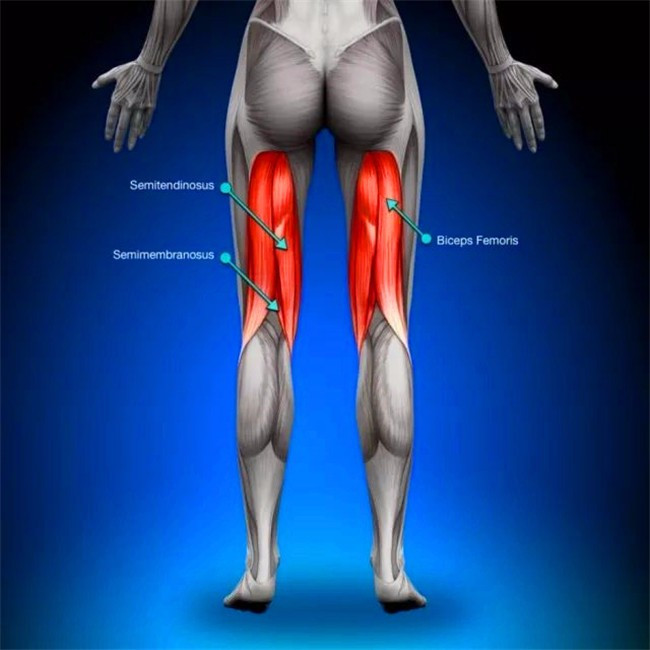
Look first inside the head, also known as the long head, its main function in addition to well-known flexor legs; but also to make the thigh extension, which is what we often say during the running ass force, squeaking force process.
If so, shouldn't it be more active when it is faster? Can hard power produce forward momentum? Why is it that the jogging is activated more on the chart?
I don't know whether or not the runners have found out that when a high-level runner runs, the feet will fall directly under the body, and the body will lean forward. This is because their center of gravity will be in front of the body and they will fall forward. Trends, this is where you can take the next step. In other words, high-speed runners with fast speeds do not necessarily have to use much power to do speed-ups by slamming their backs, but relying on the inertia of the body to easily gain forward speed.
When jogging, the body leans forward will be significantly less, and even some runners will stride, that is, the foot of the fall in front of the body, then the center of gravity in the body may even be in the rear of the body to it Moving to the front of your body, you don’t have to spend more effort.
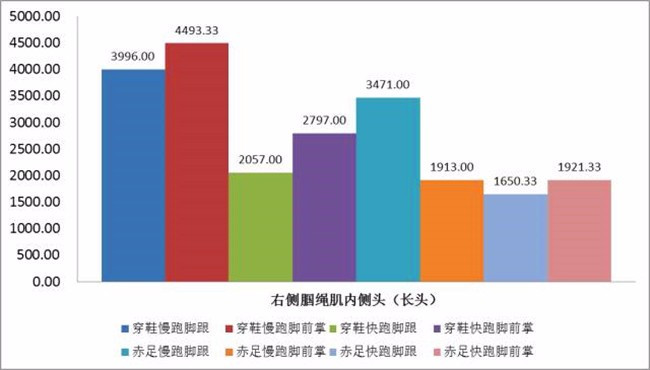
The function of the short head is mainly to bend the lower leg, that is, the action of pulling and folding the lower leg during running. Everyone may look at the picture of running. Isn't it obvious when the calf folds at a high speed? How high is the jogging on the chart? Is it also a high-speed runner who has a high speed?
Congratulations, half right, give you 50 points! The remaining 50 points deducted from the chart is not careful! Is it really just folding the calf when it's fast? Is there a little stretch in the thigh? That is to say, the feet are placed directly underneath the body, rather than simply using the calf to kick the buttocks. In other words, the folding of the lower leg is not only the force applied to the back of the thigh, but also the participation of other muscles. And this method of folding the lower leg can reduce the moment of inertia of the lower extremities, allowing legs to run faster when running! So this is a cheat book for high-level runners to save.
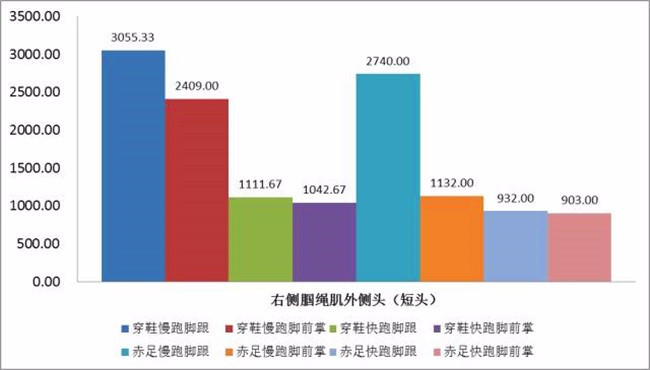
Fifth, the thigh muscles
The front quadriceps of the thigh is very large, we only have one head in it
A sensor is placed on the device. The function of this part is to extend the knee. In the running process, it helps to maintain the body's upright posture.
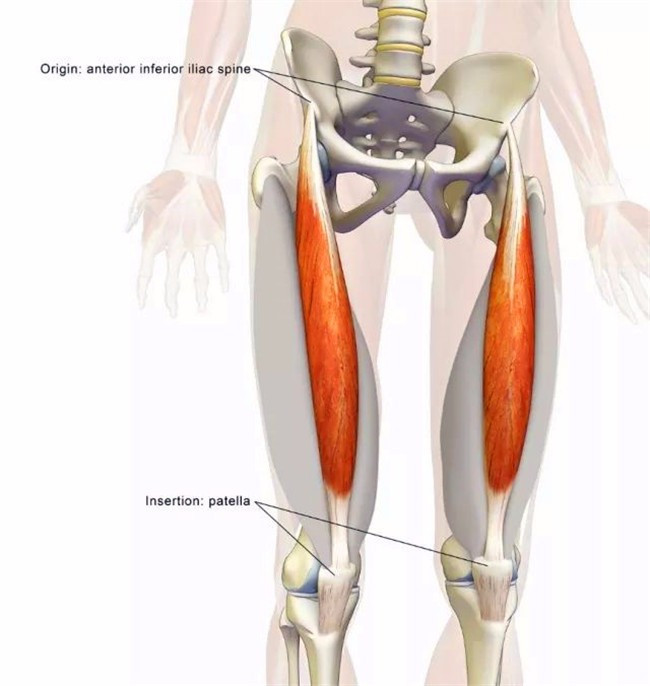
As we can see in the chart, this muscle activation during the run is significantly more than when jogging, which may be related to the greater ground reaction force during the run. Because the ground reaction force is greater, the knee needs to be slightly bent to buffer this force, and how to do this slight bending? It requires the muscles in the front of the thigh to make a centrifugal contraction to hold it, not to bend the knee too much, and to force the knee to stretch straight during the extension phase. Therefore, the faster the speed, the greater the ground reaction force, this muscle will activate significantly.
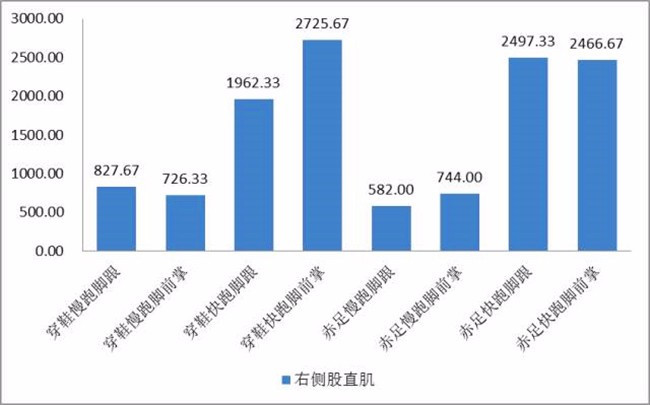
In summary. The experiment draws the following important conclusions:
1. Everyone should not neglect the frontal muscle training of the calf, that is, the hook and toe training. This lack of muscle strength will result in a lack of cushioning when landing, and excessive footsteps when landing;
2. The forefoot landing method requires good calf muscle strength. If the calf strength is insufficient, the swift attempt of the forefoot to run the method is more risky.
3. Don't overemphasize the calf pull during the running. The calf pull is a movement that occurs naturally as the speed increases. The simple lifting and folding (kicking the ass) is of little significance. The lifting and folding must be combined with the front thigh of the thigh. significance;
Sixth, summary
In fact, the purpose of this experiment is not to say which muscles are more important in the process of landing and landing in the desert. Therefore, we must try our best to practice this muscle, which leads us to a misunderstanding. The purpose of this experiment is just to take everyone to understand the working conditions of our muscles during running. Then establish a correct concept: Only every muscle is strong and powerful, and everyone works together to make runners "light as if they are feathers and run without injuries." In other words, balance and coordination are the most important, and muscle strength training should be considered from a balanced point of view.
Loveseats Manual Recliner Sofa
There are different cover materials for loveseats Manual Recliner Sofa, you can choose the material you like. We have leather loveseats manual recliner sofa, fabric loveseats manual recliner sofa and PU loveseats manual recliner sofa. And you can have different functions for your loveseats manual recliner sofa. You can choose manual recliner sofa, power recliner, loud speaker, USB charging, LED light and cupholder, etc.
Loveseats Manual Recliner Sofa,Loveseats Recliner,Loveseats Manual Recliner,Manual Recliner Sofas
Kaifeng Lanwei Smart Home Co., Ltd , https://www.sofa-recliner.com